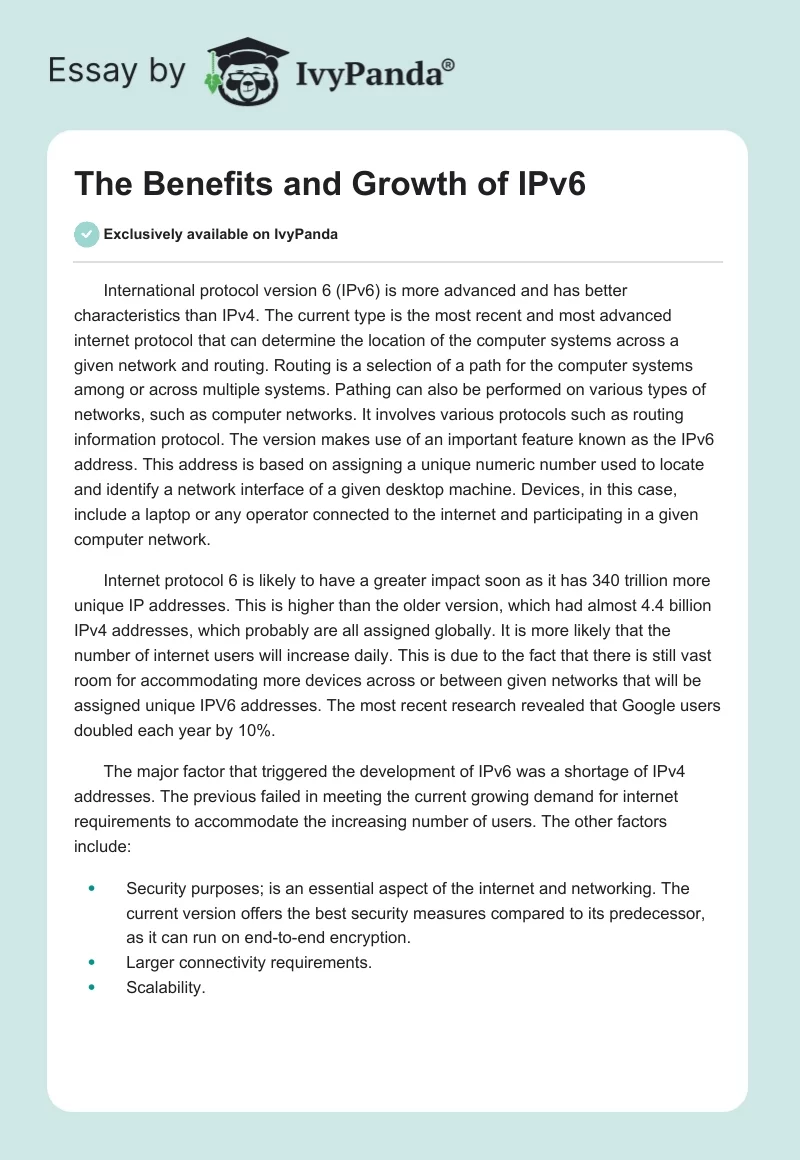International protocol version 6 (IPv6) is more advanced and has better characteristics than IPv4. The current type is the most recent and most advanced internet protocol that can determine the location of the computer systems across a given network and routing. Routing is a selection of a path for the computer systems among or across multiple systems. Pathing can also be performed on various types of networks, such as computer networks. It involves various protocols such as routing information protocol. The version makes use of an important feature known as the IPv6 address. This address is based on assigning a unique numeric number used to locate and identify a network interface of a given desktop machine. Devices, in this case, include a laptop or any operator connected to the internet and participating in a given computer network.
Internet protocol 6 is likely to have a greater impact soon as it has 340 trillion more unique IP addresses. This is higher than the older version, which had almost 4.4 billion IPv4 addresses, which probably are all assigned globally. It is more likely that the number of internet users will increase daily. This is due to the fact that there is still vast room for accommodating more devices across or between given networks that will be assigned unique IPV6 addresses. The most recent research revealed that Google users doubled each year by 10%.
The major factor that triggered the development of IPv6 was a shortage of IPv4 addresses. The previous failed in meeting the current growing demand for internet requirements to accommodate the increasing number of users. The other factors include:
- Security purposes; is an essential aspect of the internet and networking. The current version offers the best security measures compared to its predecessor, as it can run on end-to-end encryption.
- Larger connectivity requirements.
- Scalability.

